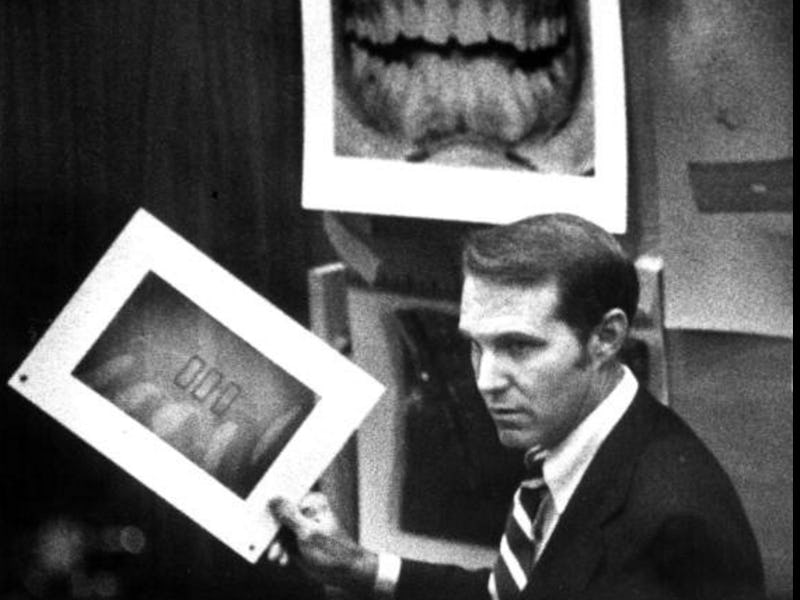White House Declares Bite-Mark Analysis Is Crap
It's not a scientifically credible way to solve a crime.

For heinous crimes — homicide, sexual assault, child abuse — bite-mark analysis has been a standby for forensic detectives. Which is odd, because there is exactly zero proof that bite-marks are usable evidence of a crime.
The Intercept obtained an early copy of a report on Wednesday from the President’s Council of Advisors on Science and Technology (PCAST), which concludes that bite-mark evidence is not, and likely never will be, a scientifically valid procedure. (The draft The Intercept has is marked as “pre-decisional” and is likely to be made public by the end of September.)
“PCAST finds that bite-mark analysis does not meet the scientific standards for foundational validity, and is far from meeting such standards,” the report allegedly reads. “To the contrary, available scientific evidence strongly suggests that examiners cannot consistently agree on whether an injury is a human bite-mark and cannot identify the source of [a] bite-mark with reasonable accuracy.”
Since its establishment in 2009 by President Obama, PCAST has been tasked with establishing whether different forensic methods meet scientific standards of validity. In the new report, The Intercept says they are critical of every forensic practice, save for DNA testing. But it is bite-mark testing that received the most negative appraisal — while the report acknowledges that many forensic dentists associated with the American Board of Forensic Odontology are defensive of their practice, they believe that “the prospects of developing bite-mark analysis into a scientifically valid method to be low” and “advise against devoting significant resources to such efforts.”
A forensic ondotologist of the U.S. Army in 2006.
This new report uses more conclusive language than a previous 2009 PCAST report, which expressed major doubts about the credibility of bite-mark testing. While they wrote that it is reasonable to say that bite-marks can sometimes exclude suspects from investigation, overall “no scientific studies support this assessment, and no large population studies have been conducted.”
While the upcoming report is the first time that a federal committee conclusively classifies bite-mark analysis as junk science, criticisms against the practice have been growing over the past decade. According to the Innocence Project, only three studies have ever examined the reliability of bite-mark analysis — one of which showed an error rate of identification as high as 91 percent.
The problem with bite-mark analysis isn’t so much in the techniques of obtaining evidence, but more so with bites themselves. The 2009 PCAST report explains that because of the elasticity of skin, swelling, and healing, and the unevenness of a surface bite, bite-marks will change over time. This distortion means that it is extremely difficult to have any accuracy. There is nearly a complete absence in accredited standards for the collection of this evidence. Accordingly, the FBI and the American Dental Association no longer recognize the usefulness of bite-mark analysis.
“There is no better example of the pitfalls of allowing junk science into the criminal justice system than bite mark analysis,” journalist Radley Balko wrote in The Washington Post in 2015. “The field has helped convict a disturbingly high number of people later proven to be innocent.”
As of 2016, 25 men wrongly convicted or charged on the basis of bite-mark analysis have since been exonerated. Other cases are still pending in court and it’s suspected that many other people have been wrongly convicted.